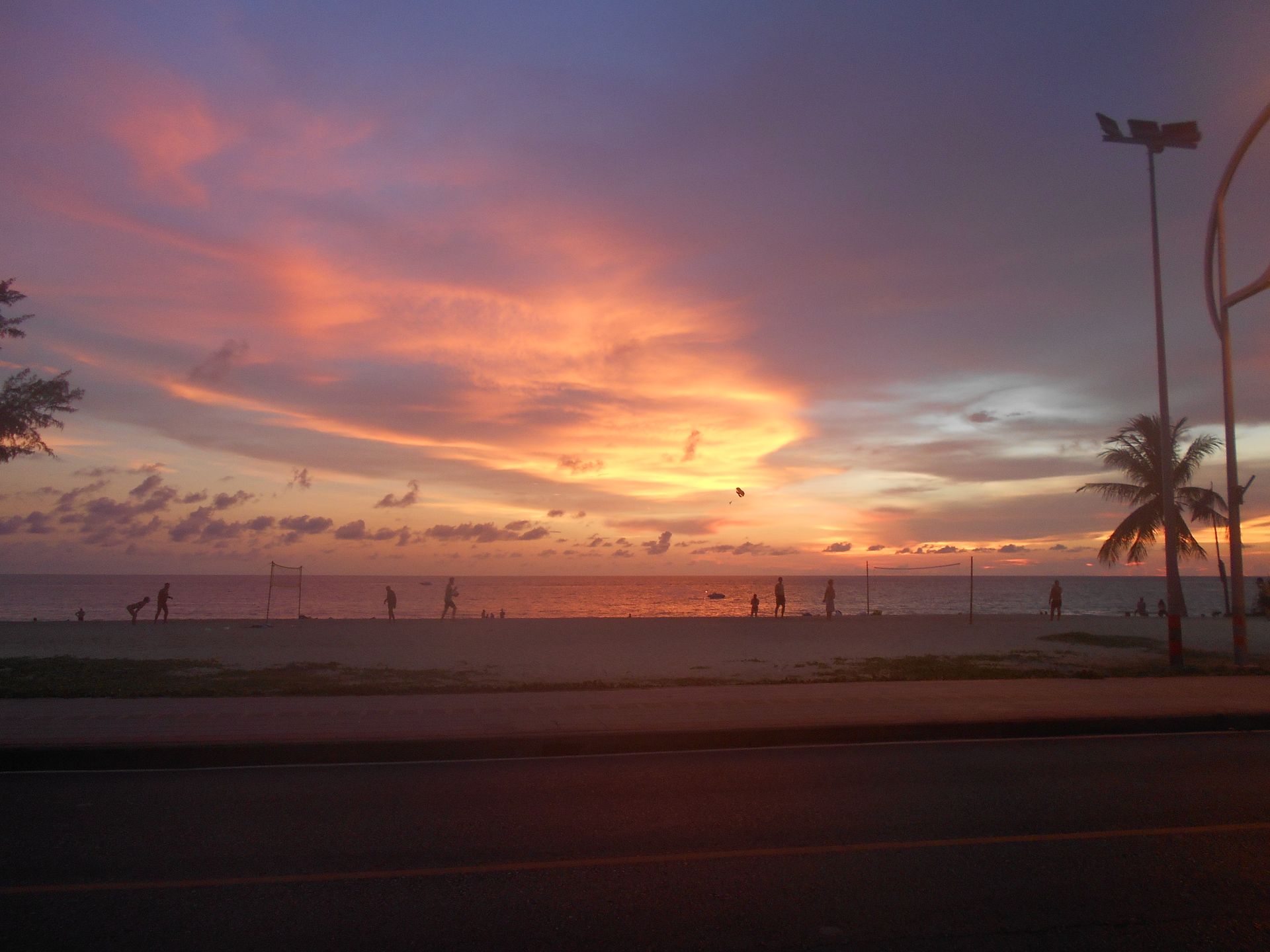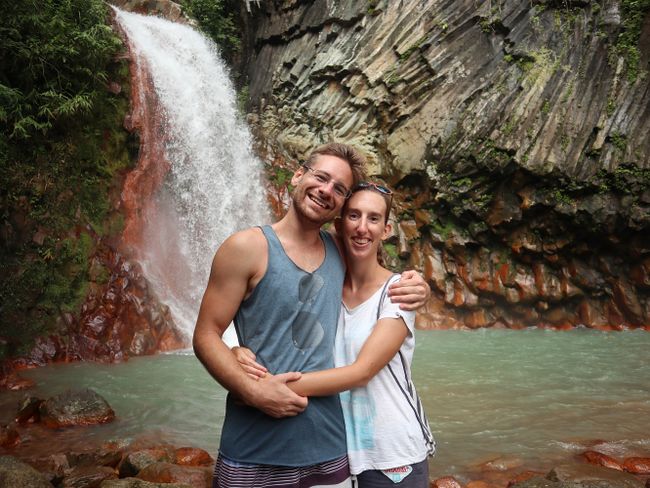The city center of Phnom Penh - Sightseeing and Genocide Museum (Day 115 of the world tour)
Lofalitsidwa: 28.12.2019
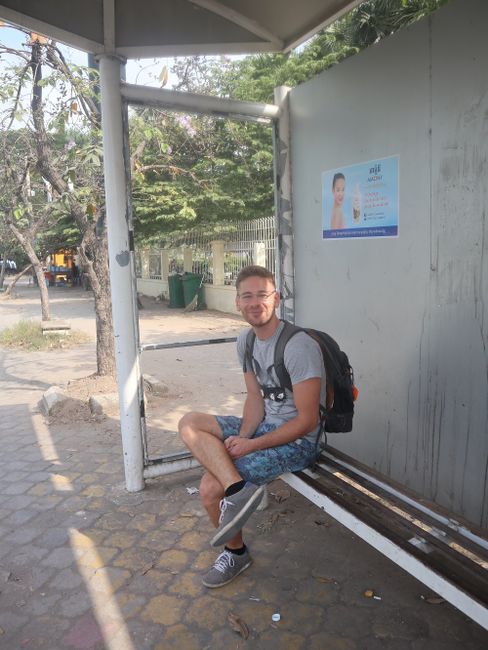
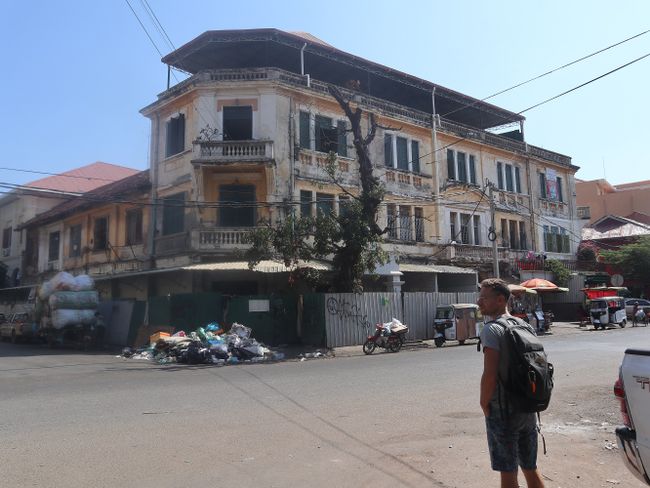
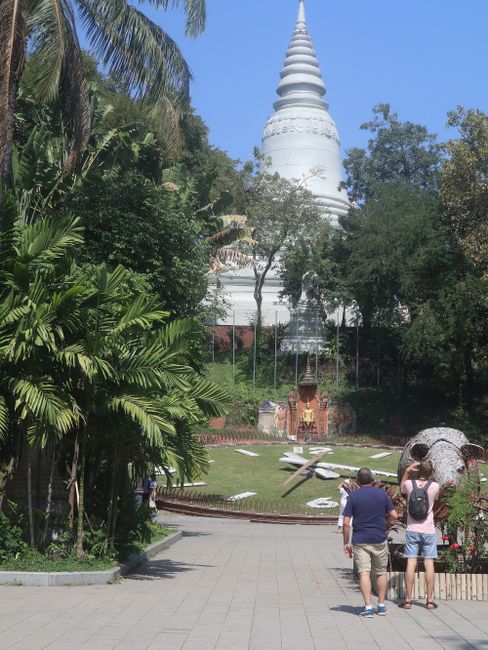
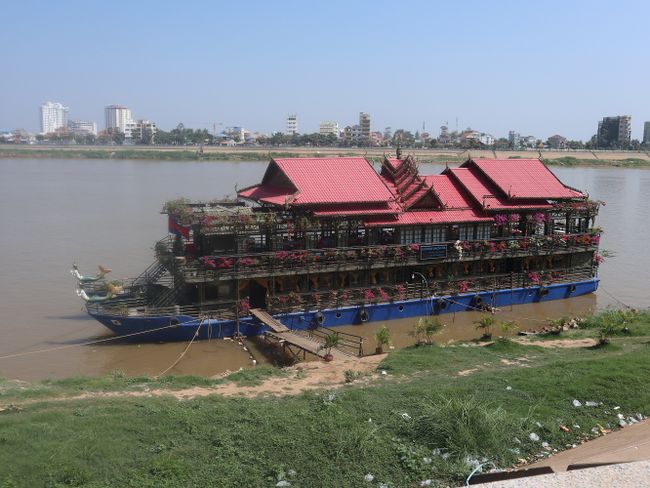
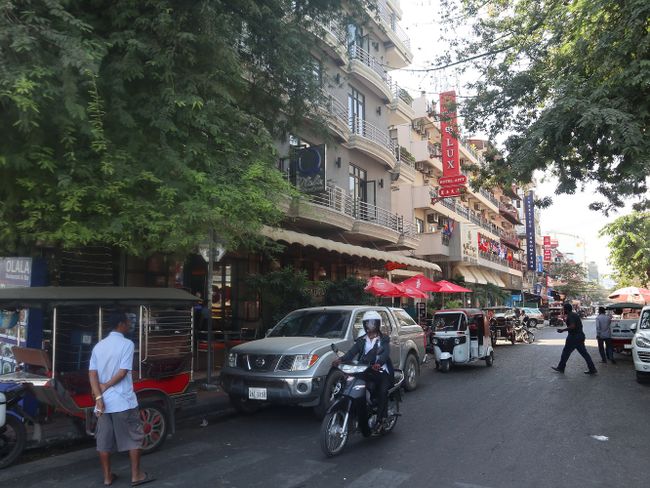
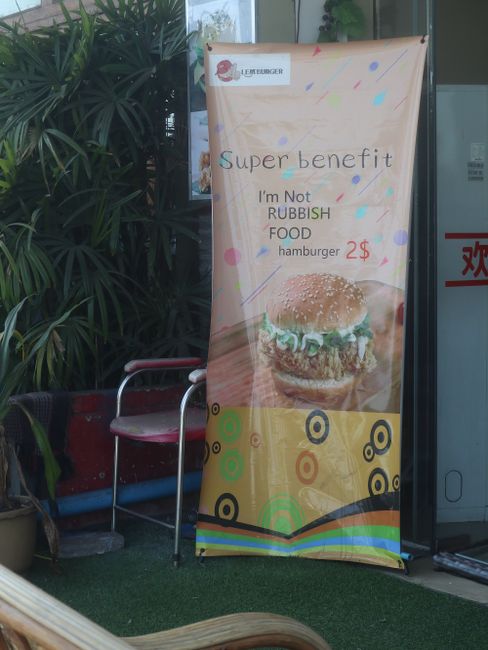
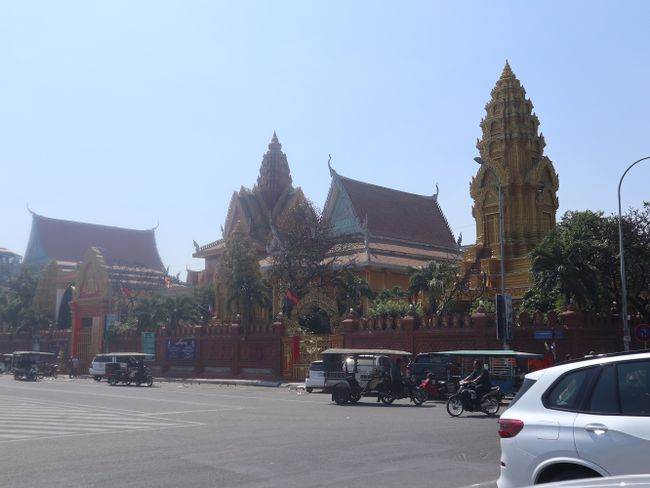
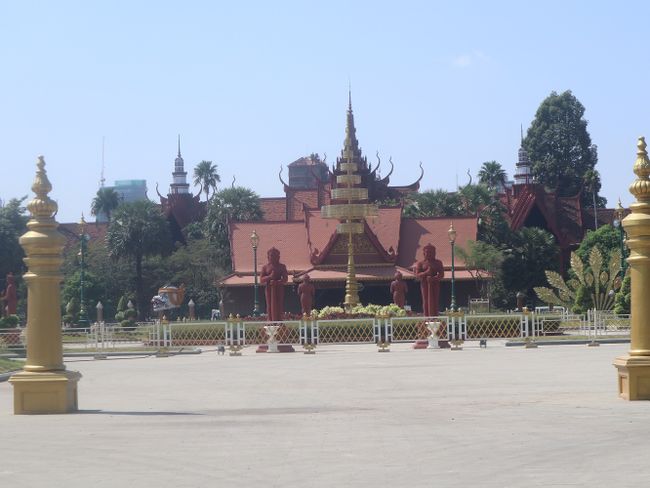
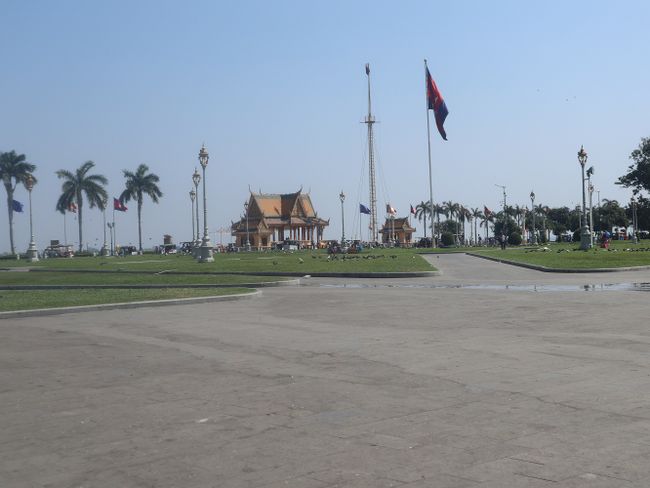
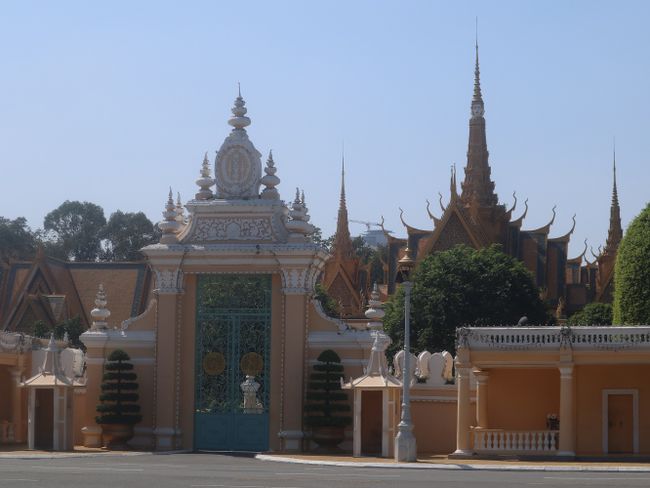
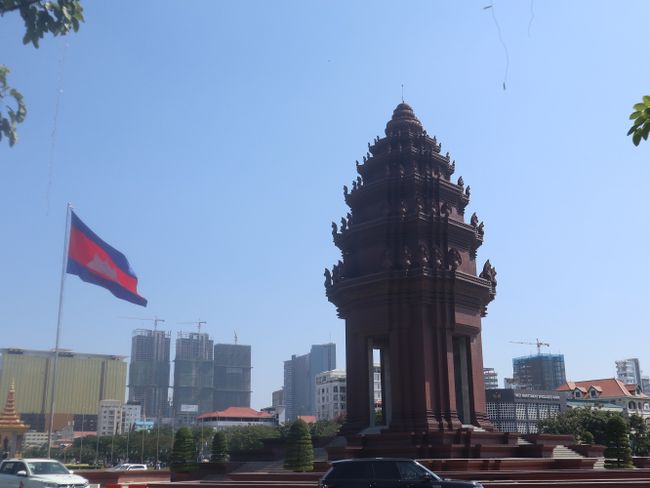
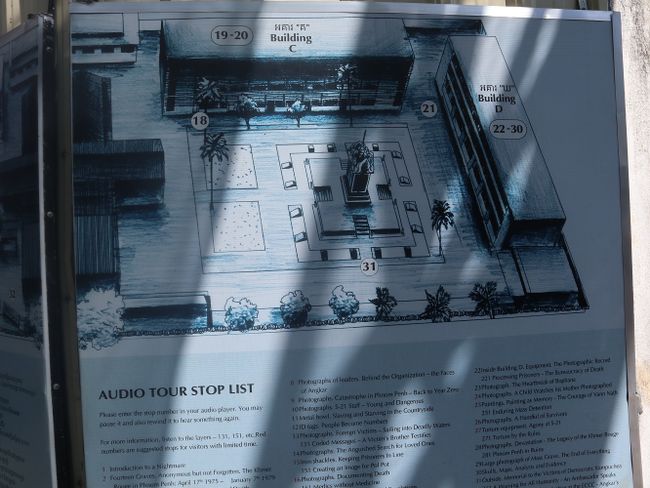
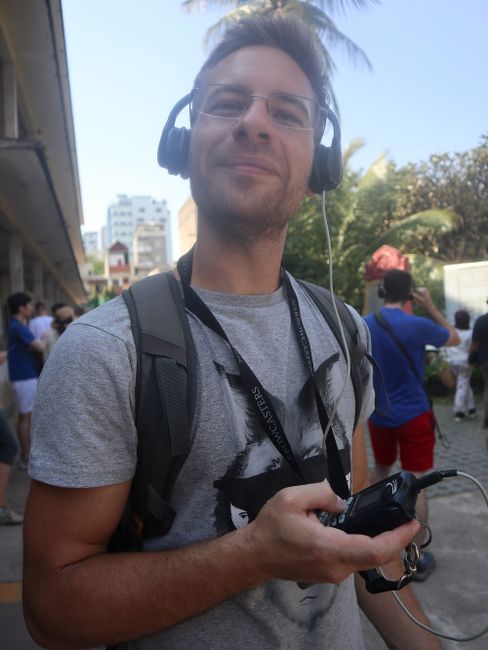
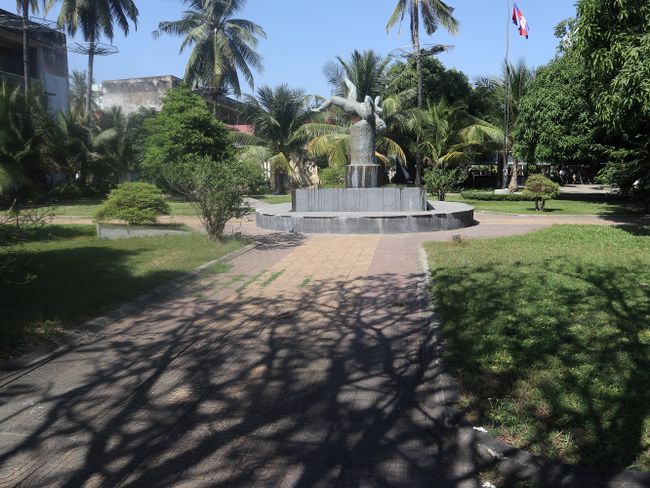
Lembetsani ku Newsletter
12/28/2019
After only moving around our neighborhood yesterday, we wanted to explore the city center of Phnom Penh today. Since it is almost 6 km away, we decided to take the local bus (a tuk-tuk would have been an option too, but probably much more expensive ;-))
Only since 2014, there is a city bus line in the capital of Cambodia. With this, you can travel as far as you want for 1,500 Riel (about 40 cents). So, we stood at the main road leading to the city center and waited for the next bus.
We already noticed in advance that the ride would take a little while because the streets are completely full and the traffic is very congested. We wondered if this might be because there are significantly more cars here than we have seen in Vietnam...
After a few minutes, a bus finally arrived, we got on, and for the first time in Asia, we had to buy the ticket directly from the driver when boarding the bus :O No bus attendants and no paying during the ride or when getting off.
In addition to us, there were only Asians on the bus, some of whom were talking loudly and happily. Another woman stared at me for a long time, apparently because of our white skin, which is considered a beauty ideal here, I have no idea^^
It took us nearly 30 minutes for the 6 km, but at the slow pace, we could at least look out the window a bit. It was interesting, for example, to see workers hand-painting the curb at a gas station in yellow and black! :D We had never seen something like that before, and I assume that in Europe, you can buy ready-marked stones. This manual work looked a bit unusual ;-)
Arriving at our desired stop, we started looking for a travel agency that would sell us a bus ticket to Siem Reap for the day after tomorrow. We had found a few providers online in advance, and now we wanted to visit them in person because usually, that's where you get the better deal :p
Unfortunately, for the first time, we had no success here :O At first, we just passed by one of the offices because they were the most expensive online. Instead, we went to the post office, where, according to the internet, there were also buses departing. However, we couldn't see anything related to that in the branch, so we went back to the first provider.
By the way, on the way from A to B, we passed Wat Phnom, a temple that we skipped visiting after seeing all the other temples here ;-) However, a clock planted on the lawn was fascinating!
We also passed a children's hospital. There were long lines on both sides of the entrance and even rows of benches, probably 50m long, where parents were waiting with their children. We saw many very thin children, children with bandages on their foreheads, or with feverish eyes. The sight was quite moving because so many children were waiting there! :O
By the way, the hospital itself looked modern but seems to be somewhat overloaded in terms of staff or space...
Naturally, on the sidewalk, sellers immediately sensed their business, catering to the target audience. Besides toys for children, there was also a stand selling diapers or baby food.
Well. Finally, we were back at the first travel agency, where we were informed that there were no more seats available for the day after tomorrow. Oh no!!
A bit disappointed, we walked back towards the post office and saw another provider on the way. He told us that he could only sell tickets one day in advance, so he was also out.
Back at the post office, we asked at an information counter about bus tickets and were directed to a counter. Yes, tickets are sold there. Hey! After a quick check, it turned out that all seats were already taken for the day after tomorrow :("
The first office had advised us to visit an office on the Riverside as there should be many offices there. That was now our "last hope," and we actually ended up in a real tourist/backpacker neighborhood, where one office lined up next to another ;-)
We successfully bought two tickets for the day after tomorrow - departure at 7:10 am. Ei ei ei :D :D At least, we won't arrive too late at the destination :p
Our actual goal for today (besides buying the ticket) was to visit the Tuol Sleng Museum. Logistically, it made sense to stop at a few typical sights of the city on the way from the bus office.
In addition to other temples, this was mainly the Royal Palace, which was unfortunately closed for lunchtime^^ Of course, various tuk-tuk drivers pointed that out, sensing their business opportunity, offering to drive us to other sights to bridge the time. It is always very difficult for them to understand that we just want to walk ;-) :D
Finally, we arrived at the museum and also treated ourselves to the audio guide to get a comprehensive picture.
The Tuol Sleng Museum is a former high school that was used as Prison S-21 during the rule of the Khmer Rouge from 1975 to 1979 in Phnom Penh and in its function reminds in almost everything of the concentration camps of the Nazi era.
Honestly, who has ever dealt with the history of Cambodia before, especially with the events since the 1970s? Neither accidentally nor in school in history class has this ever been mentioned for me - which is very, very unfortunate, as it is a super important topic!!!
For details, you would probably be better off reading an official article yourself, but here is a brief historical background:
What almost nobody knows and we did not know before - in addition to the Vietnam War, there was also the "Secret War" by the Americans, in which they bombed Cambodia and killed hundreds of thousands, mainly civilians. As always, the matter is somewhat complicated. Cambodia is a monarchy, and the King of Cambodia and the USA were friendly towards each other.
The USA financed the construction of the road from Sihanoukville, Cambodia's only port city, to Vietnam. However, during the Vietnam War, the Cambodian King allowed the Viet Cong, the communist "enemies" of the USA, to use this road to resupply their troops.
As a countermeasure, the USA now also bombed Cambodia and plunged the country into chaos and civil war. In this politically unstable time, the Khmer Rouge, a Cambodian communist group, managed, with the help of the USA, to overthrow the King and seize power.
The head of the Khmer Rouge was Pol Pot, who had studied in France and returned to Cambodia as a teacher. He had the idea of leading Cambodia back into a stone-age communism. As a result of the preceding destabilization of the country by the USA, there were many traumatized young men who had lost their livelihoods. This provided the fertile ground that the Khmer Rouge needed to have enough followers to enforce their ideologies.
Money was abolished, cars, industry, and other modern facilities such as telephones and televisions were destroyed. Within three hours after the Khmer Rouge "liberated" Phnom Penh in 1975, the mood in the previously jubilant population changed.
On orders, everyone had to pack their things, and the entire city was emptied. Those who refused to leave were immediately killed. The remaining residents were distributed to planned areas where they had to work as farmers in the countryside through forced labor until death. Since many of them had lived in the city all their lives, they had no idea about agriculture and made a few mistakes in cultivation for which they were then punished.
While the entire population was expelled from the cities and sent to the countryside as laborers, the construction of so-called prisons for traitors and criminals also began. One of these prisons is Tuol Sleng, which is now a museum.
The former high school was converted into a prison with torture chambers. The so-called traitors were mainly intellectuals (doctors, teachers, monks, etc.) who the Khmer Rouge saw as a threat because they could potentially incite a rebellion. Just wearing glasses was already a punishable offense. There were numerous such prisons scattered throughout Cambodia.
If you are in Phnom Penh, you should definitely visit this museum. It is terrible but so incredibly important to learn about this topic. Occasionally, I felt a bit sick and paused the audio guide to sit outside on the bench and let everything sink in because it was really intense.
Over 100,000 people were tortured in this prison alone and forced to confess before they were eventually executed in the so-called Killing Fields. In the prison itself, nobody was supposed to be tortured to death. There were even nurses who provided basic treatment to the injured so that their torture could continue. These "nurses" had received a 4-month crash course that had nothing to do with modern medicine and produced extremely painful procedures.
The prisoners were primarily supposed to confess their spying activities or betray other spies, which was absurd since most of them were completely innocent. Men, women, and even children were held in the prison, with children usually being immediately killed.
One example of such a "confession" stuck in my memory. After months of torture, the prisoner eventually named six names of alleged CIA agents, an organization he had never even heard of before. But it was what the guards wanted to hear, so he eventually said it.
By the way, one of the only 12 survivors is a painter, and his paintings are exhibited in the museum. I couldn't listen to these details together with the audio guide but waited outside for Jonas and only partially listened to the information because it was really harsh for me :O
In 1979, the Vietnamese actually liberated Phnom Penh, but the Khmer Rouge continued to tyrannize the country until 1990. Only in 2009, under international pressure, a process was initiated to convict the remaining leadership of the Khmer Rouge.
There were not many judgments, though, as the defendants are old, and some allegedly no longer legally responsible, for example due to dementia. The head of this prison, Tuol Sleng, called "Comrade Duch," was sentenced to life imprisonment.
Aside from the outrageous history itself, it is almost unimaginable that only so late charges were filed at all. The main reason is probably that to this day, the government consists of (former) members of the Khmer Rouge. If they were all convicted, Cambodia might not be governable anymore...
As you can imagine, Jonas and I were very thoughtful and talked a lot about what we had seen and heard after visiting the museum. I could write much more about this topic, but it is all so gruesome, and if anyone is really interested, they should take the time to read about it themselves!
Jonas sees parallels in all of this to the Iraq War and the subsequent reign of terror of ISIS in the Middle East. The preceding destabilization of a country by the Americans, with over a million deaths, and the blossoming ideology pursued by ISIS, enforced with violence against the civilian population, is just too similar to what happened here after the US bombings and the subsequent takeover of power by the Khmer Rouge in Cambodia. History repeats itself... even in our lifetime.
Possibly, Jonas and I will visit the Killing Fields themselves tomorrow, then maybe I'll write something about it after all ;-)
Of course, there are not many photos of the museum. Out of respect for the events that took place there, after a few photos of the buildings, I put the camera aside.
Lembetsani ku Newsletter
Yankhani
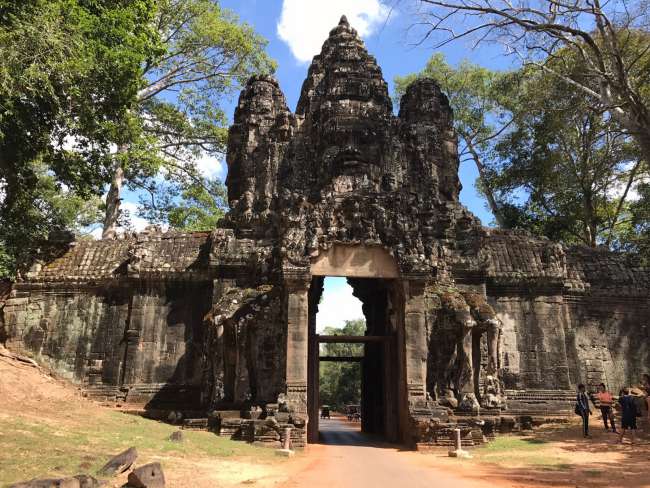
Malipoti amaulendo Cambodia
